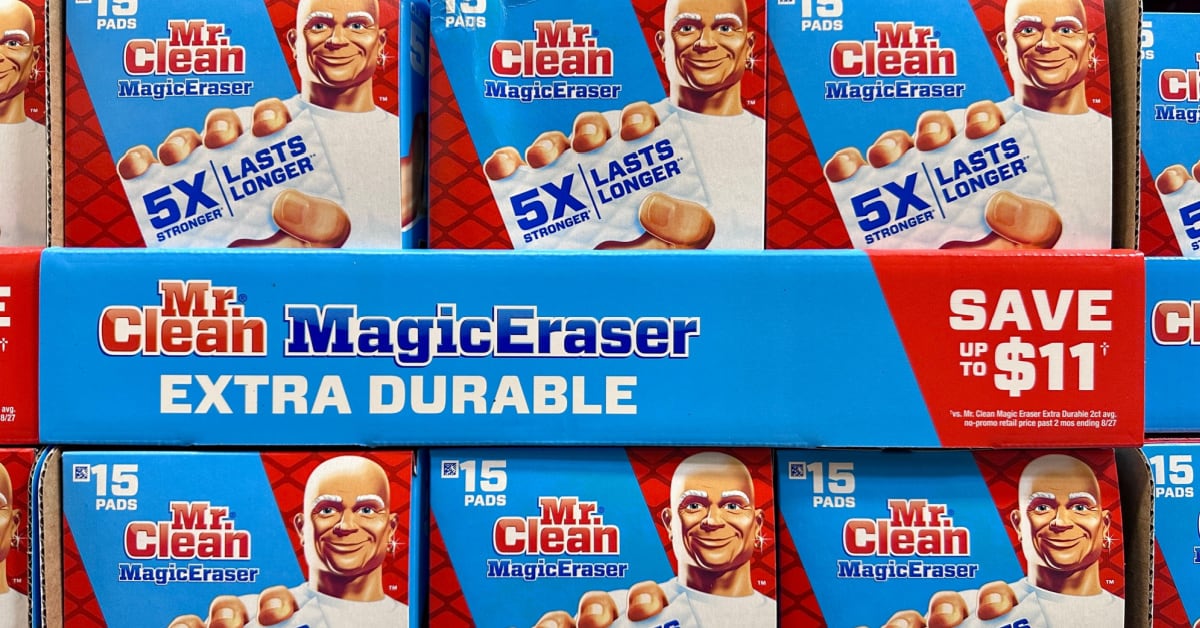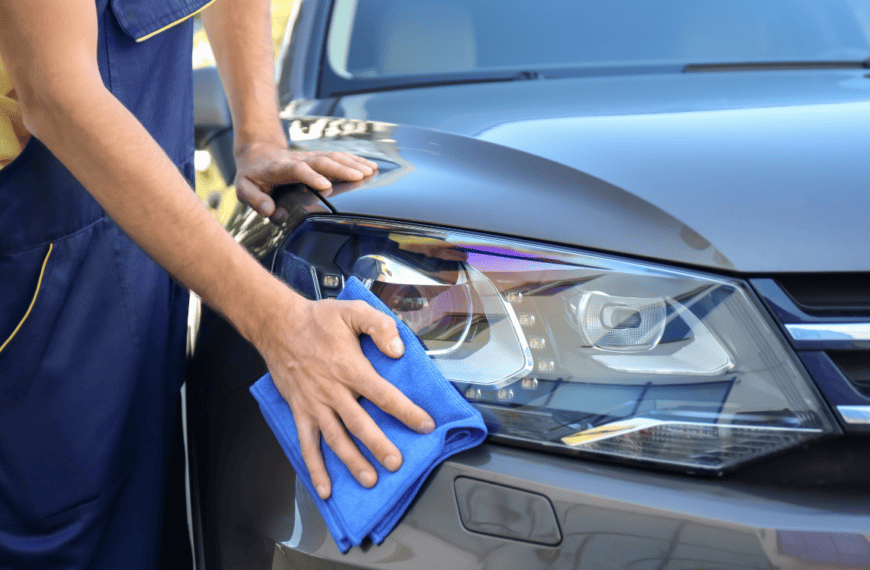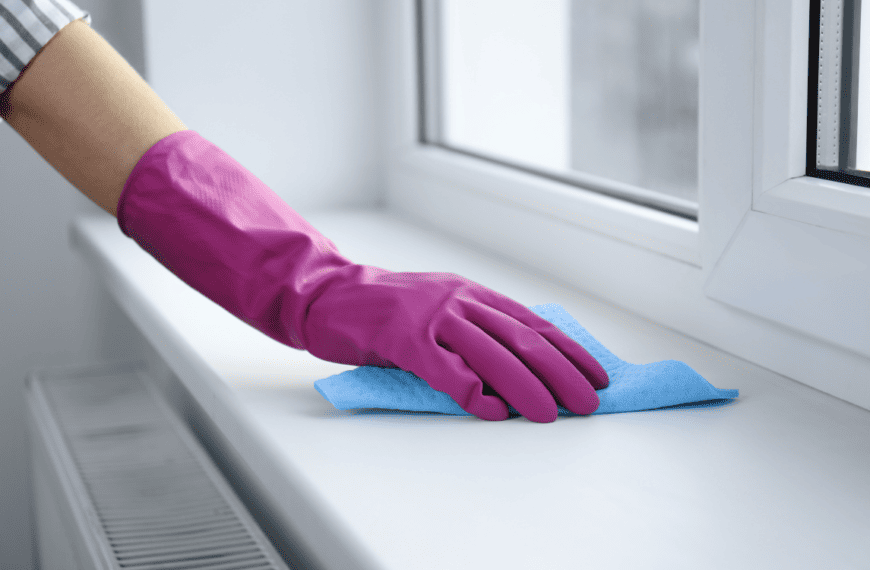With their ability to bust through stains, most of us are content not thinking about how does Magic Eraser work. Having kids, I always keep a few on hand for the toughest marks, often scrubbing first and asking questions later. They work because of “magic”, and that’s all I need to know when crayon is coating the living room walls.
Of course, what we consider magic is actually simple science involving melamine. It’s worth understanding, too, because although Magic Erasers can clean some surfaces, they’ll destroy others. If you overestimate them, you could cause permanent damage with these seemingly harmless sponges.
Knowing how it functions, you can better determine how and when to use a Magic Eraser. You may even figure out some clever household cleaning hacks. Get the most from these minor miracles by learning how Magic Erasers work to remove scuff marks and other common household stains.
Key Takeaway
- Mechanical, Not Chemical. Magic Erasers use melamine foam to act like ultra-fine sandpaper, removing dirt through mechanical action, not chemical reactions.
- Not for All Surfaces: Magic Erasers can remove protective layers and dull materials like finished wood and stainless steel. Use carefully to avoid permanent damage
- Quick Wear and Tear. Magic Erasers deteriorate quickly during use, capturing soil and shredding away like a pencil eraser. Be prepared for frequent replacements.
What Is a Magic Eraser?
Magic Erasers consist of simple melamine foam. Manufacturers combine melamine, an organic nitrogen-rich compound, with the secret ingredient formaldehyde to produce plastic resins. Melamine-formaldehyde resins make all kinds of familiar products, including dinnerware, furniture, and countertops. Following a blowing process to foam it, the melamine resin cures into a solid yet porous and flexible material to make Mr. Clean Magic Erasers.
Melamine foam has been around since the 1990s. The ultra-lightweight material that makes up Magic Erasers is a melamine foam with the commercial name Basotect, a BASF product carrying several beneficial characteristics, including:
- Sound absorbency
- Thermal insulation
- Flame and chemical resistance
- Abrasiveness
- Thermal tolerance
Alongside Magic Erasers, these traits make melamine foam a popular choice for thermal sound insulation for numerous commercial and residential uses. Although the formula contains formaldehyde, it does not release free toxins during use.
How Do Magic Erasers Work?
The melamine-formaldehyde polymer in Magic Erasers creates a web of fine strands separating air pockets in the foam. Although the cured strands make the sponge feel soft and flexible, they are as hard as glass. When dragged across a surface, the foam acts like ultra-fine sandpaper (think 3000–5000 grit). It gets into the tiniest grooves to scrape dirt and grime away. There’s nothing chemical about how it loosens and lifts stubborn stains; it’s all mechanical action.
The part that makes the Mr. Clean Magic Eraser work so well is the porosity. Unlike sandpaper, which would spread the stain around after loosening it, the massive air pockets let the melamine foam sponge absorb dirt after the abrasive fibers shave it off the surface you’re cleaning. Like magic, the stains disappear with a few swipes!
The Magic Eraser uses water to aid in absorbency and allows it to glide smoothly across surfaces. It can work while dry, albeit less efficiently. During use, melamine foam erasers deteriorate relatively fast because they’re light and porous. As they capture soil, they shred away like a pencil eraser, leaving a hole in the sponge and bits of balled-up foam on the surface.
You Can’t Clean Everything With Magic Erasers
Knowing it works more like super-fine sandpaper, we can start to understand why Magic Erasers aren’t ideal for every situation. Finished surfaces are the most at risk. With micro-abrasive action, Magic Erasers strip back protective layers to dull the look of glossy materials and expose surfaces to lasting damage.
The following are a few surfaces that you should avoid cleaning with a Magic Eraser:
- Non-stick pots and pans
- Painted or finished wood surfaces
- Stainless steel or copper
- Natural stone
- Computer or TV screens
- Car paint
- Fine jewelry and vintage collectibles
Magic Erasers are also not meant for personal cosmetic use. The abrasive cleaner can irritate the skin, causing damage as it pulls dirt and stains off our hands and arms.
The same goes for teeth. A few years ago, a TikTok trend circulated of people using Magic Erasers to whiten their smiles. Although effective to some extent, the foam can damage the tooth’s protective enamel, creating more dental problems than it solves. Add in the chance of accidental ingestion, and ditching the toothbrush for a melamine sponge doesn’t seem wise.
General Safety Precautions for Magic Erasers
Given the drawbacks of melamine foam sponges, you can’t expect them to be the best solution every time. Although there are specific stains I know will come out easiest with them, I typically use Magic Erasers as a last resort. And factoring in their relatively high cost and low durability, it pays off to be discriminating about when you pull them out.
But let’s say you tried everything, and the stain remains. The Magic Eraser could be your last hope. The following are a few essential safety precautions to ensure the best results:
- Test the sponge on an inconspicuous area to check for damage
- Do not use an overly wet sponge on vulnerable porous surfaces, such as hardwood
- Apply light pressure to let the abrasive foam clean effectively and gently
Are Magic Erasers Hazardous to Your Health?
Magic Erasers contain melamine-formaldehyde-sodium bisulfite copolymer, the plastic resin making up all the solid parts of the sponge. Years back, someone saw that scary word “formaldehyde” and decided that using the sponges exposed you to harsh chemicals. Formaldehyde is a fairly prevalent toxic compound, irritating at low levels and capable of causing severe respiratory issues in high doses.
While that can sound concerning, formaldehyde in the Magic Eraser’s melamine polymer can’t separate from the rest of the material under normal conditions. If you swallow it, it won’t break down in your gut. The primary concern is intestinal blockages from ingestion, which the package warns against. Melamine foam erasers can break down into melamine and formaldehyde components but only under high heat and acidic conditions for prolonged periods.
How To Use a Magic Eraser
Magic Erasers are simple to use but easy to misuse if you expect them to clean like an ordinary sponge. For the best results, follow these steps to use Magic Erasers correctly.
Step 1: Dampen the Sponge
Saturate a clean Magic Eraser with cold water. Squeeze out excess water until the sponge is only slightly damp.
Step 2: Scrub the Stain
Spot-test the eraser before cleaning the stain. If the surface tolerates it, gently scrub the mark off the surface. Apply only light pressure, moving the sponge back and forth and in circular motions to loosen the stain in every direction.
Step 3: Wipe the Surface
Wipe the surface with a clean cloth to remove excess moisture and melamine foam bits.
Can I Use a Magic Eraser With Cleaning Materials?
The Magic Eraser works via mechanical action, so you can use all-purpose sprays as a chemical agent to give stains a 1–2 punch. Don’t use aggressive acid cleaners with them or harsh chemicals like bleach. I recommend using simple soap and water with a magic sponge, and Mr. Clean even offers Dawn-infused Magic Erasers for extra degreasing power.
What Can I Use the Magic Eraser On?
Now that we know how to use them, the question becomes, “Which materials are Magic Erasers safe to clean?” Inside and outside, there are numerous places you can use melamine foam sponges for efficiently removing stains and refreshing surfaces. Here are some of the ways you can use magic sponges around the home:
- Clean fridge and microwave interiors
- Remove wall stains and baseboard scuff marks
- Pull dried paint or nail polish off floors
- Refresh sneakers, especially along the midsole
- Clear sap and dirt from metal patio furniture
- Wipe greasy fingerprints from keyboards and laptops
- Scrub soap scum, mold, and mildew from tile and grout
- Clean grime-splattered stove tops and counters
- Remove pen, permanent marker stains, or crayon marks from hard surfaces
- Take fingerprints and grime off light switches and other high-touch surfaces
- Restore the shine to mirrors, faucets, and shower doors
- Strip sticker residue from jars, bottles, and cans
- Remove rust from metal surfaces
With a light touch, you can also use a Magic Eraser on delicate surfaces that the melamine sponge can potentially damage. Leather seating is a perfect example. Alongside a leather-safe cleaning solution, a Magic Eraser can quickly remove challenging grime, but too much pressure or scrubbing can dull the finish. Understanding how they work and knowing safer steps to use them, you can test Magic Erasers in different ways to find even more uses around the home.
How To Optimize Your Magic Erasers
Magic Erasers are incredibly efficient, but the fact that they aren’t cheap and produce microplastics keeps them from being one of my top options. And if I do use them, I want to ensure I maximize their efficiency and usage. Here are a few ways you can get the most out of every Magic Eraser:
- Use while wet. Wet sponges are less likely to cause damage and are often quicker at removing stains
- Scrub lightly. Hard scrubbing compresses and uses more of the sponge than necessary, causing it to wear out quicker
- Cut them into smaller pieces. Smaller squares create a more usable abrasive surface area
- Don’t use them on abrasive surfaces. Areas like grout will shred erasers quickly, so you may want to limit them to smooth materials
The best way to make your Magic Erasers last longer is to avoid using them. They’re incredibly effective but not the only tools that can tackle stains around the house. If you try other cleaners first, you can have Magic Erasers ready as your secret weapon when those fail. Apply a light touch, and follow these insights into how Magic Erasers work to get the best results with every use.









